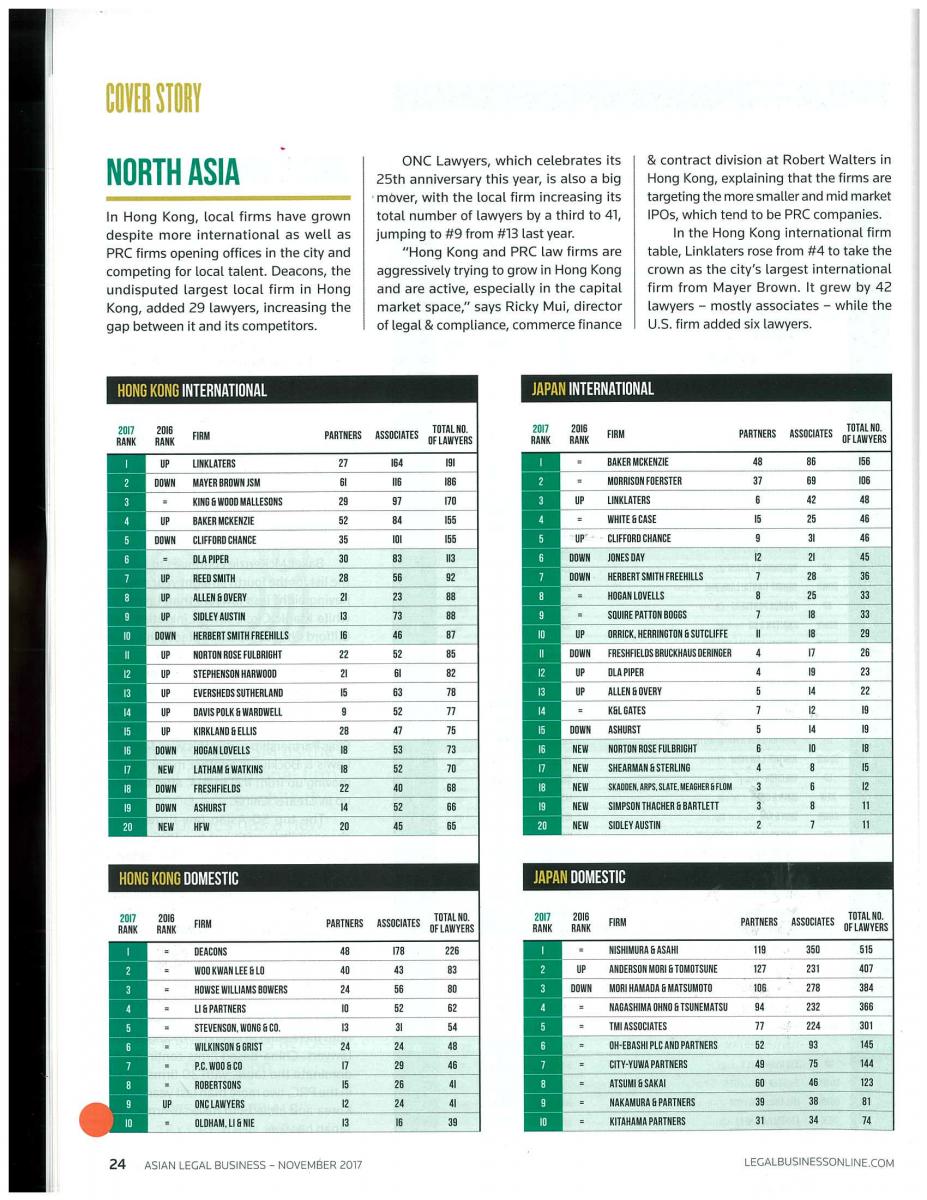Updated Solicitor Rates for Taxation (Party and Party Basis)
Successful litigants in Hong Kong rarely recover their full legal costs (i.e. those costs paid to their own lawyers) from the losing/counter party.
For the past 20 years, the process of recovering legal costs from another party (known as “taxation”) was based on what was considered “fair and reasonable” rates for solicitors calculated in 1997. Until now, the rates have lagged far behind the commercial rates charged by lawyers in Hong Kong.
The updated rates will take effect from 1 January 2018.
High Court
| EXPERIENCE | BEFORE 1 JAN 2018 | AFTER 1 JAN 2018 | CHANGE (%) |
| Trainee Solicitor | 1,066 to 2,000 | 1,700 | — |
| Newly admitted | 1,600 to 2,000 | 2,600 | 30% |
| 2 – 4 years | 2,000 to 2,500 | 3,200 | 28% |
| 5 – 6 years | 2,400 to 3,000 | 3,900 | 30% |
| 7 – 8 years | 2,900 to 3,500 | 4,500 | 28.57% |
| Over 10 years | 3,200 to 4,000 | See below | — |
| 9 – 15 years | 5,200 | 30% | |
| Over 15 years | 5,800 | 45% |
District Court
| EXPERIENCE | BEFORE 1 JAN 2018 | AFTER 1 JAN 2018 | CHANGE (%) |
| Trainee Solicitor | 533 to 650 | 1,130 | 74% |
| Newly admitted | 1,066 to 1,280 | 1,730 | 35% |
| 2 – 4 years | 1,350 to 1,650 | 2,130 | 29% |
| 5 – 6 years | 1,600 to 2,000 | 2,600 | 30% |
| 7 – 8 years | 1,900 to 2,300 | 3,000 | 30.57% |
| Over 10 years | 2,100 to 2,600 | See below | — |
| 9 – 15 years | 3,460 | 33% | |
| Over 15 years | 3,860 | 48.46% |
Practically, this means there is now less of a recovery gap for winning parties in litigation. The substantial increments are intended to allow Hong Kong to remain competitive as a preferred venue of choice for international dispute resolution. The recoverable rates are finally closer to what lawyers actually charge in the city.
 Suite 503, 5/F, St. George's Building, 2 Ice House Street, Central, Hong Kong
Suite 503, 5/F, St. George's Building, 2 Ice House Street, Central, Hong Kong +852 2868 0696
+852 2868 0696








